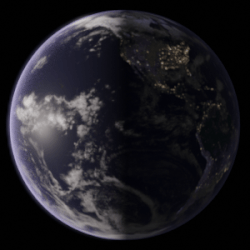
A diurnal cycle (or diel cycle) is any pattern that recurs every 24 hours as a result of one full rotation of the planet Earth around its axis. [1] Earth's rotation causes surface temperature fluctuations throughout the day and night, as well as weather changes throughout the year. The diurnal cycle depends mainly on incoming solar radiation. [2]


